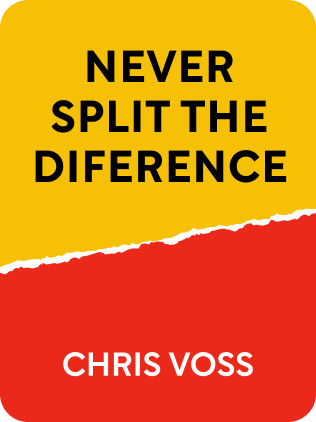

This article is an excerpt from the Shortform book guide to "Never Split the Difference" by Chris Voss and Tahl Raz. Shortform has the world's best summaries and analyses of books you should be reading.
Like this article? Sign up for a free trial here .
What is the loss aversion bias? How can it help you secure a stronger position in a negotiation?
The loss aversion bias is a type of framing effect. In the context of negotiating, it involves framing your offer in such a way that emphasizes loss as opposed to gain.
Read more to lean how to use the loss aversion bias in a negotiation.
What Is the Loss Aversion Bias?
We evaluate risks and rewards largely based on how they’re presented to us. If you’ll recall, this is known as the framing effect. One of the most powerful manifestations of the framing effect is the loss aversion bias. In short, people are motivated more by fear of loss than hope of equal gain.
A related idea known as the certainty principle makes people more drawn to options that they perceive as being a sure thing than those they perceive as being risky.
Knowing this, you can put yourself in a strong negotiating position by framing your preferred solution as one that is safe, secure, and prevents your counterpart from incurring a loss.
We hear this from salespeople all the time when they say things like, “I just wanted to give you the opportunity to take advantage of this offer before it goes away.” This is why deadlines are so powerful: they create a sense of urgency by engaging the loss aversion bias. When presented with the possibility of a loss, you’re no longer thinking of gaining something: you’re thinking about losing out on a deal.
Framing your offer based on the loss aversion bias is all about making your counterpart think of the glass being half-empty rather than half-full.
How to Frame What You Want
Here’s how you can use your knowledge of framing effects to lead your counterpart toward the conclusion you want.
1. Anchor their emotions through an accusation audit that acknowledges all of their fears. By preparing them for a loss, you’ll trigger their loss aversion and make them work hard just to avoid it. This also helps frame your offer as being better than worse alternatives.
- Even something as seemingly innocuous as prefacing a criticism with “You might hate me for saying this, but…” is an accusation audit. You’re priming the other person for an unpleasant experience. To avoid this experience, they’ll start convincing themselves that what you’re telling them isn’t actually that bad: this is the loss aversion bias at work.
2. Let the other side go first. You don’t know enough about what you’re buying or selling to make an informed offer right away, so use their offer as a starting point.
- But remember that your counterpart might try to use this to their advantage by throwing out an extreme first offer to use framing effects against you (like asking $600 for a $200 iPhone, so that when you split the difference, a $400 counter looks “reasonable”). Don’t lose your cool if they do this. We’ll cover how to deal with this later when we talk about how to take a (figurative) punch in negotiations and how to deflect and punch back.
3. If you’re negotiating something with a monetary value, establish a range. Base it on historical examples or what the figures in comparable deals look like. Be sure to use a bolstering range (where the low number is actually what you’d want).
- For example, if you’re negotiating a salary at a new job, you could say, “At X Company, this position pays between $170,000 and $200,000,” when $170,000 is actually your goal.
4. Be open to non-monetary terms like recognition and perks. These are often small add-ins that cost your counterpart nothing but can make all the difference to you.
- The author mentions receiving a lowball offer from a prospective client, but agreeing to do the deal because the organization offered to put him on the cover of their magazine. This was a cost-free throw-in for the client (they needed to have someone on the cover), but made all the difference to the author: the free publicity was highly valuable for his consulting business.
5. Use odd numbers. Psychologically, an odd number sounds like a product of precise calculation, even if it’s completely arbitrary. Your counterpart is far more likely to take a number like $41,972.37 seriously than $40,000 (which sounds like a placeholder or just a negotiating platform).
6. Surprise your counterpart with a gift. This can be a simple conciliatory gesture that costs you little. This engenders goodwill and triggers their natural emotional need for empathy and reciprocity. People feel the need to repay kindness with kindness.

———End of Preview———
Like what you just read? Read the rest of the world's best book summary and analysis of Chris Voss and Tahl Raz's "Never Split the Difference" at Shortform .
Here's what you'll find in our full Never Split the Difference summary :
- Lessons learned from years as an FBI hostage negotiator
- Why negotiation is about emotional appeals, not rational ones
- The 5 methods for tactical empathy, which gets you what you want by focusing on the other person's feelings






